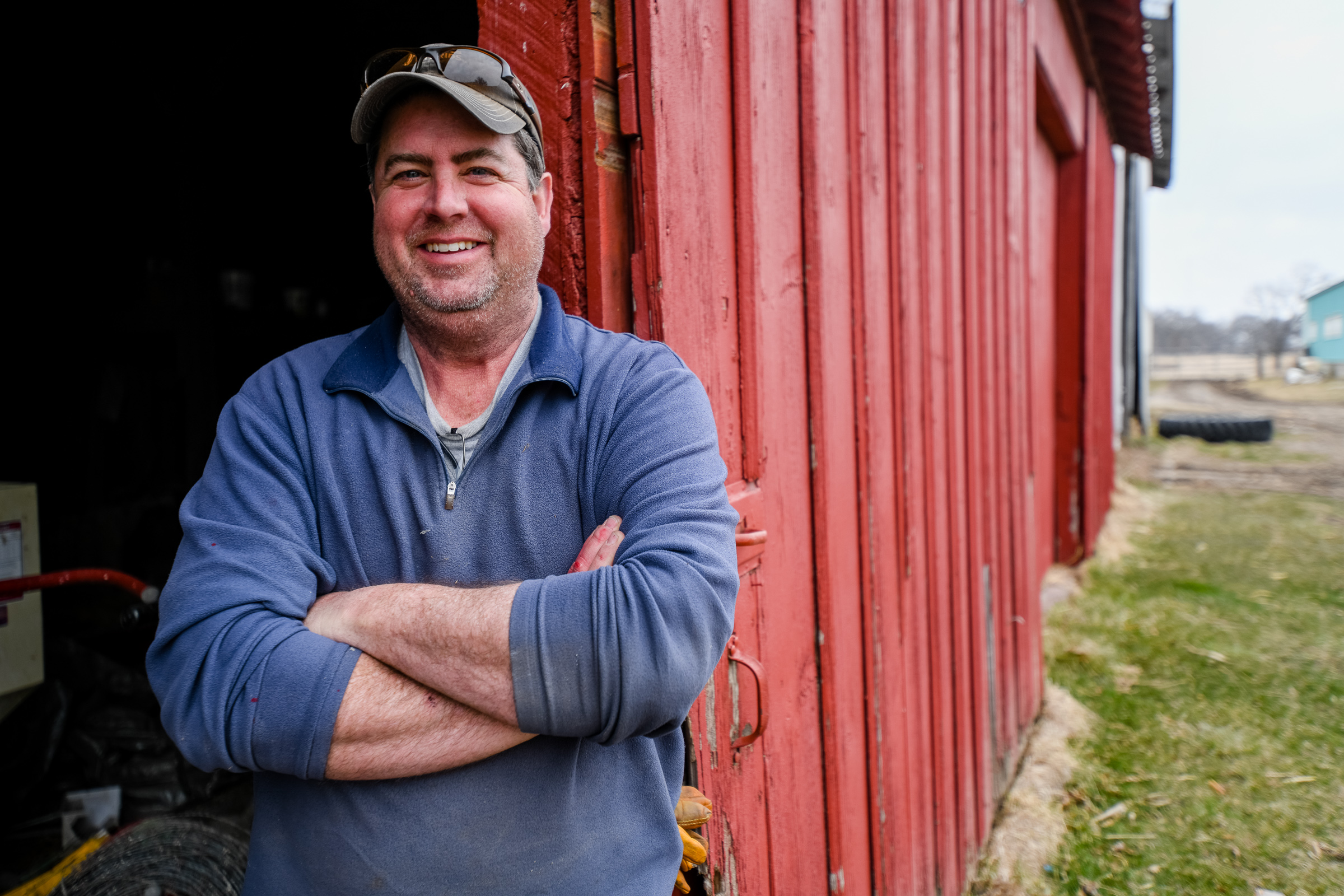
ISA Treasurer and District 6 Director Dave Walton (Photo: Iowa Soybean Association)
Farmers: Hold China accountable, expand export opportunities
February 24, 2022 | Bethany Baratta
When talks were beginning about the trade impasse between the U.S. and China, Iowa soybean farmers voiced their concerns about potential retaliation. While national leaders spoke of short-term pain for a long-term gain, farmers wondered what that meant locally and globally.
Four years after the start of the trade war, farmers shared their experiences and the local impact the trade war has had on their industries and their farm during a virtual tariff town hall hosted this week by Farmers for Free Trade.
“When the (Trump) administration started talking about the steel and aluminum tariffs, we warned that if they went into place, soybeans would be an easy target, especially Iowa soybeans,” said Dave Walton, treasurer for the Iowa Soybean Association and a seventh generation Iowa farmer.
Just 15 miles from the Mississippi River, most of Walton’s soybeans are exported via the Mississippi River, through New Orleans and on to global customers.
“When the tariffs were put into place, one of the things we saw was the immediate drop in price,” said Walton, who farms near Wilton in east central Iowa. “Normally it’s a supply and demand market, but when there’s outside forces working on that market—in this case tariffs—we saw that offset. And that went directly to our bottom line.”
That’s because the soybeans that were once destined for China ‘flowed away from the river’ and onto other modes of transportation and to other markets; what was once a profit turned into costs chewed up by freight costs and tariffs.
Lost sales
Soybean demand didn’t disappear just because of the trade impasse and tariffs, Walton said. Instead, it created an opportunity for countries like Brazil and Argentina to cash in.
“What we did was allow Brazil and Argentina to step in and expand their acreage,” he said. Because of that, Brazil and Argentina have made significant advancements in infrastructure to improve their export capabilities.
“We think it’s just simply an Iowa or U.S. issue, but we have to think more strategically in how this opens the door to our competitors,” Walton said.
On the farm
The trade impasse between U.S. and China created uncertainty on the farm and intense conversations with bankers, farmers participating in the town hall said.
“We’re building in a more resilient business model on our own farm that relies less on exports,” Walton said. He’s shifted some soybean production from commodity beans to seed beans. Walton is also processing more beef locally as opposed to plants that rely heavily on export markets.
Farm inputs manufactured overseas are slower getting to the farm, though Walton said it’s difficult to decipher whether this is because of the fallout from the trade impasse or supply/logistics issues exacerbated by Covid and labor challenges.
“We’ve been more aggressive about getting parts and herbicides purchased a lot earlier than usual,” Walton said.
Brent Bible, a farmer from Lafayette, Ind., said he’s also thinking about inputs and supplies sooner.
“It comes down to being a little more protective of the operation,” Bible said.
This means thinking about the end market for his crops, and when he makes the sale. He’s also adjusted his planting decisions, leaning on a heavier corn rotation because of a “safer” market near the farm.
“We’re more protectionist in price, locking in a profit earlier and selling the product ahead to know we’ve got somewhere to go with it sooner than ever,” he said.
Michelle Erickson-Jones grows wheat, malt barley, safflower, sunflowers, corn, alfalfa, forage grains, and maintains a small cow/calf operation in Montana. Like Bible and Walton, she’s been aggressive in locking in inputs and profits when possible.
“I am very aggressive in locking in input costs,” she said. “A lot of that is due to inflationary pressures and the supply chain.”
She has shifted some of her wheat products to the local flour mill, satisfying a local market instead relying solely on exports.
Moving forward
Under the phase one agreement, China was to purchase $200 billion of additional U.S. exports before the end of 2021. A recent report shows that China bought only 57% of U.S. exports it had committed to purchase under the agreement.
Farmers reiterated the urgency for the administration to hold China accountable to not living up to their end of the agreement.
“China has fallen short of the phase one commitments, and we need this administration to hold their feet to the fire and make up some of that difference,” Walton said.
Government should help—not hinder—trade, Bible said.
“The government’s role should be to pull down barriers to trade and markets, but not create those barriers,” Bible said.
Senator Joni Ernst said trade is a top priority, and is urging the administration to make it their priority as China gains a foothold in the Indo-Pacific Region.
She says joining the Comprehensive and Progressive Agreement for Trans-Pacific Partnership (CPTPP) would be a good first step.
“We simply can’t afford to lose out,” Ernst said. “We need to take action and make sure China doesn’t’ take the lead in this region.”
Additionally, a critical trade position-USDA’s Under Secretary for Trade and Foreign Agriculture Affairs—is vacant.
“This position is critical for American producers and farmers so we can build and maintain strong relationships with trading partners around the globe,” she said.
Back